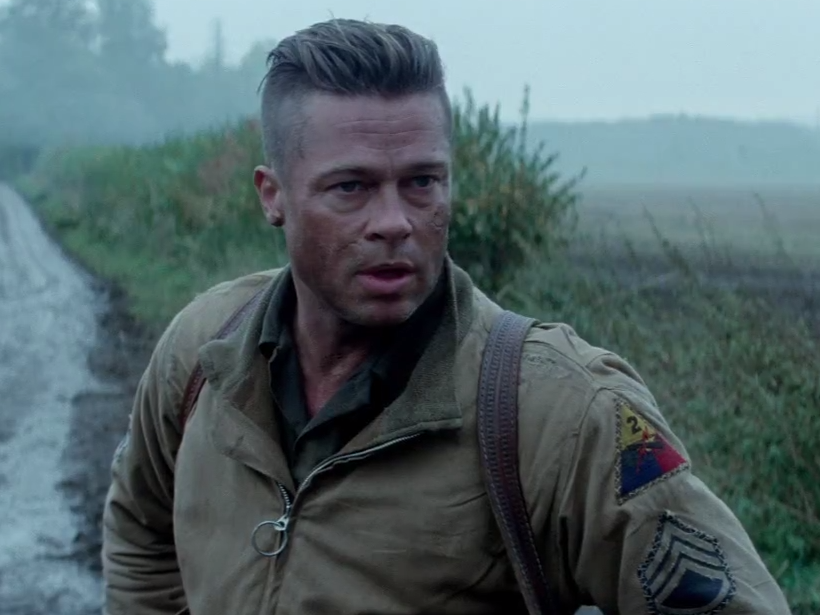War is hell. It doesn’t need to be proven anymore. It’s dehumanizing, evil, and scarring. Fury drives that point home with the spin on WWII that is most unique to that war: with a tank. Fury’s use of tank warfare keeps the battle sequences fresh enough, but like war, how much despondence and desolation does someone have to put themselves through before they start to look for a way out?
Norman (Logan Lerman) is fresh out of boot camp. He arrives on the front and is assigned under Don ‘Wardaddy’ Collier (Brad Pitt), a proven tank commander. Collier and his team – Boyd (Shia Laboeuf), Gordo (Michael Pena), and Grady (Jon Bernthal) – educate Norman about war’s horrific truths. Norman grows in resolve and callousness, willing to follow Collier as the battles become more and more treacherous.
Tank warfare is something I was hoping a WWII movie would attempt to build a film around. Historically, the tanks were first used in this war, and character studies about tank units are understudied in the movies. When focused on the combat, writer/director David Ayer rouses the audience with action. Each battle comes across like an archaic video game, as we view the war from the perspective of inside the tank. Confusion is just as prevalent in the tank as it is on the battlefield; Ayer does a great job painting the fear of the surprise attack and where the attack comes from since tanks usually incur the wrath of a sneak attack. The tank on tank combat is terrifying by showing just how few weak spots a tank actually has. Finally, the final act really captures the claustrophobia of a tank for the people inside. I wish more of the in-between time was spent in the tank so we could see downtime inside of the tank, but overall, Fury gives a solid example of what life is like holding a powerful weapon in your hands.
The opening scene of Fury is a vicious sneak attack, right away pointing out how dehumanizing war is. From there, poor Norman is our guide into the depths of misery. Norman sees how a conscience can lead to deaths for people he cares about, and the young recruit is forced by Collier to eliminate all his moral objections to harden him for endless combat. There is a nice respite from the violence in the middle of Fury when Collier lets Norman act on his youthful impulses and keeps the rest of the team at bay (this particular scene goes on for too long). But even at the end of that tryst, the story ends unhappily. Collier’s guidance hardens Norman into a machine necessary to the team in the big third act stand off. By then though, Norman ceases to exist in his old form, having his innocence be taken from him. Fury does not vilify Collier or his actions, nor does it praise him as a secret genius; the movie posits that context is the most important factor.
We believe in Collier because of what Brad Pitt brings to the role. Pitt turns his Inglorious Basterds character into a man who has seen too much but knows what to do to succeed. He is brutal and direct. Pitt gives Collier a channeled control with hidden moments of reflection on his current state. Logan Lerman is the Uppham (from Private Ryan) character. He’s fine, but can’t quite carry the innocence lost like in Spielberg’s film. Shia Laboeuf, Michael Pena, and Jon Bernthal all get a few great moments to carry and nail them easily.
Fury is not Saving Private Ryan, but it’s in the conversation. A powerful film of intensity, bravery, and unspeakable terror, Fury’s tank warfare needs to be seen to be realized. Just know that if you go in a child, you will come out an adult after what you’ve seen. If there’s ever a draft, I’m high tailing toward Canada.

